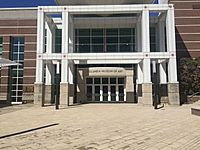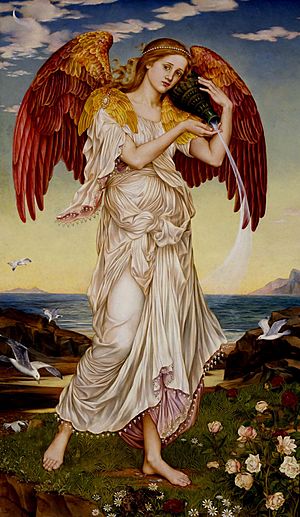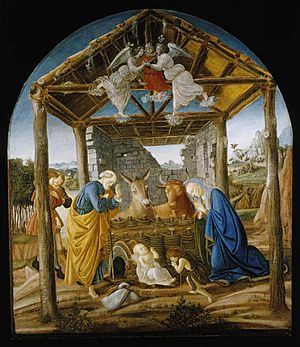Columbia Museum of Art facts for kids

Entrance pictured in 2019
|
|
| Location | Columbia, South Carolina United States |
|---|---|
| Type | Art museum |
The Columbia Museum of Art is a fantastic art museum located in Columbia, South Carolina. It's a place where you can explore incredible artworks from different times and places.
A Look Back: How the Museum Started
The Columbia Museum of Art first opened its doors in 1950. Its original home was a beautiful old house built in 1908. This house belonged to the Taylor family in Columbia.
The Taylor House Years
The museum stayed in the Taylor House for nearly 50 years. They even added new parts, like art galleries and a round planetarium, to show off more cool things. In 1982, the Taylor House became a special historic place.
Gifts of Art
When the museum first started, its art collection grew thanks to gifts from local collectors. They also received ten paintings by "Old Masters." These were famous artists from long ago, like Joshua Reynolds and Juan de Pareja.
The Kress Collection
Something really exciting happened in 1954! The museum was chosen to receive amazing Renaissance and Baroque art from the Samuel H. Kress Foundation. Over the next 20 years, the museum received 78 beautiful pieces of art from these periods.
A New Home for Art
By the 1990s, the museum had grown too big for the Taylor House. It needed more space to show all its wonderful art.
Finding a New Location
A new spot was chosen in downtown Columbia. It was where two old department stores used to be. Part of one store was taken down to create a public space called Boyd Plaza. The other store's frame was used to build the new museum!
Designing the New Museum
The new museum opened in 1998. It has a modern design but still looks back at its history. It uses brick, just like the old Taylor House. The museum now has a huge 22,000 square feet of gallery space.

Boyd Plaza
Outside the museum, Boyd Plaza is a cool place to hang out. It has sculptures like Upright Motive No. 8 by Henry Moore. The plaza was updated in 2017, making it even nicer for everyone to enjoy.
Inside the Museum
When you walk into the museum, you'll see a tall, open space called the Robinson Jr. atrium. Natural light shines in from the roof. Since 2010, a giant, colorful chandelier made of red, orange, and gold glass hangs here. It was created by a famous artist named Dale Chihuly.
The first floor has galleries for special changing exhibitions. It also shows modern and contemporary art from the museum's own collection.
Amazing Art Collections
Upstairs, on the second floor, you can travel through art history! There are 20 galleries filled with art from ancient times to today.
Art from Around the World
You can see ancient art and artifacts from the Mediterranean world. This includes early Greek pottery and Roman glass. There are even 12 Greco-Roman marble sculptures, like a statue of Hygeia, the goddess of health.
The museum also has a special collection of Chinese art. It shows art from around 2000 BCE to 1400 CE, including cool tomb sculptures.
European Masterpieces
You'll find many European paintings and sculptures from the Renaissance and Baroque periods. These include pieces from the famous Kress collection. The museum mixes these older works with other art to show how art changed over time.

Some of the famous artists whose work you can see include:
- Sandro Botticelli (he has the only fresco by him in an American collection!)
- Jacopo Tintoretto
- Jacob van Ruisdael
- François Boucher
- Joshua Reynolds
- Giovanni Canaletto
American Art and More
The museum also has beautiful European and American paintings, sculptures, and furniture from the 18th to the 20th centuries. You might see paintings by:
There's also cool furniture by designers like Duncan Phyfe and Gustav Stickley. You can also find stained glass from Tiffany Studios and special pottery.
Exciting Exhibitions
The museum often hosts special exhibitions. In 2019, they showed art by Jasper Johns, a famous artist who grew up in South Carolina. His collection included works by other modern artists like Andy Warhol and Roy Lichtenstein.
The museum has also featured exhibitions by other world-famous artists. These include Georgia O'Keeffe, Matisse, Dalí, and Norman Rockwell. They've even shown a huge 20-foot mural by Jackson Pollock!

